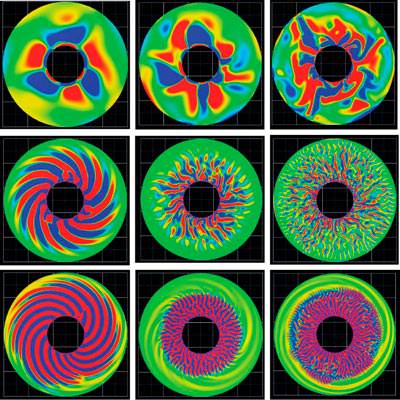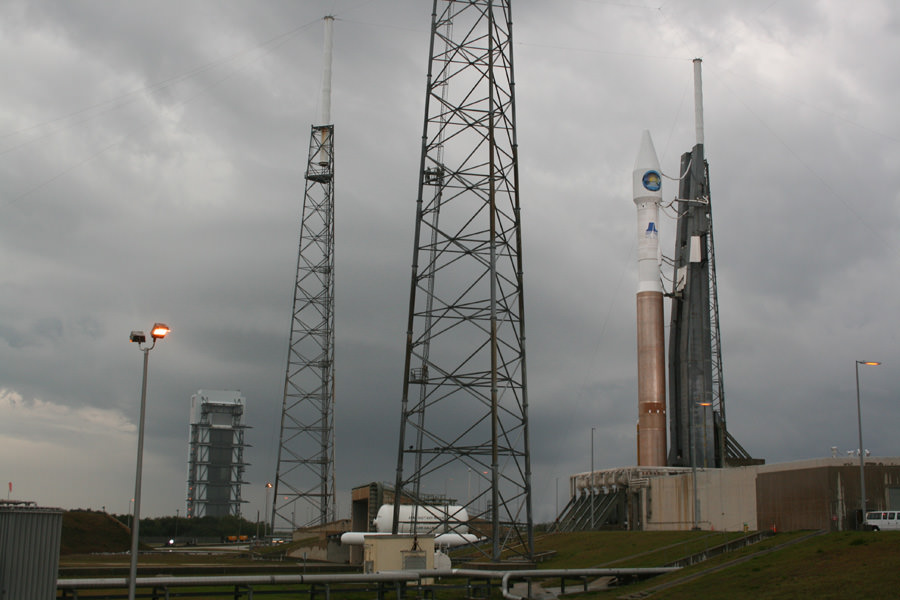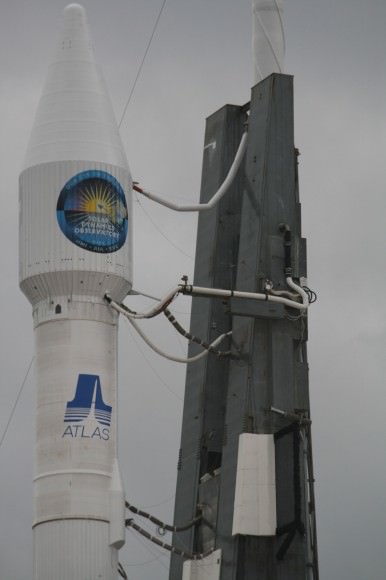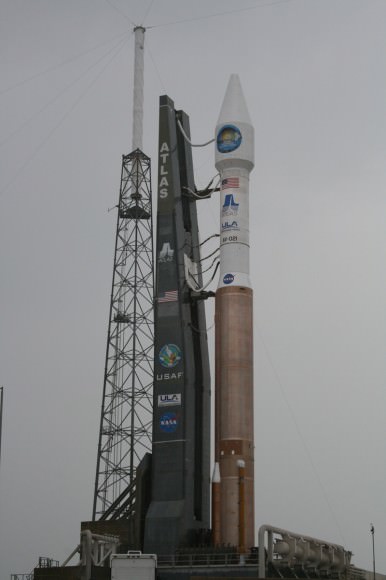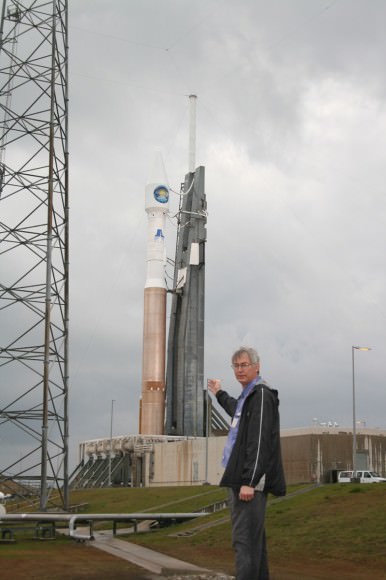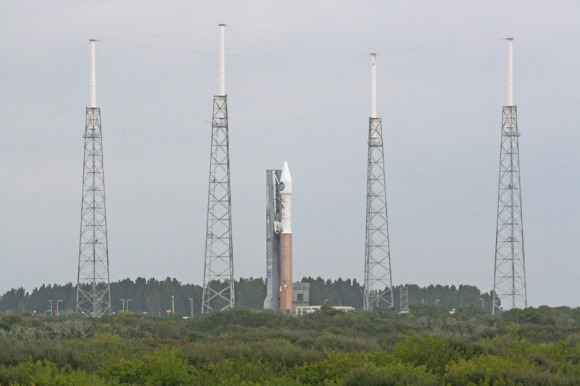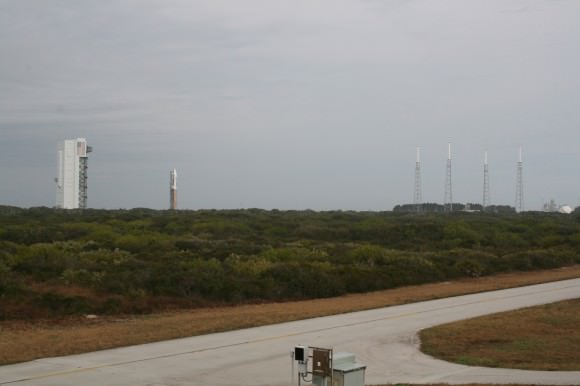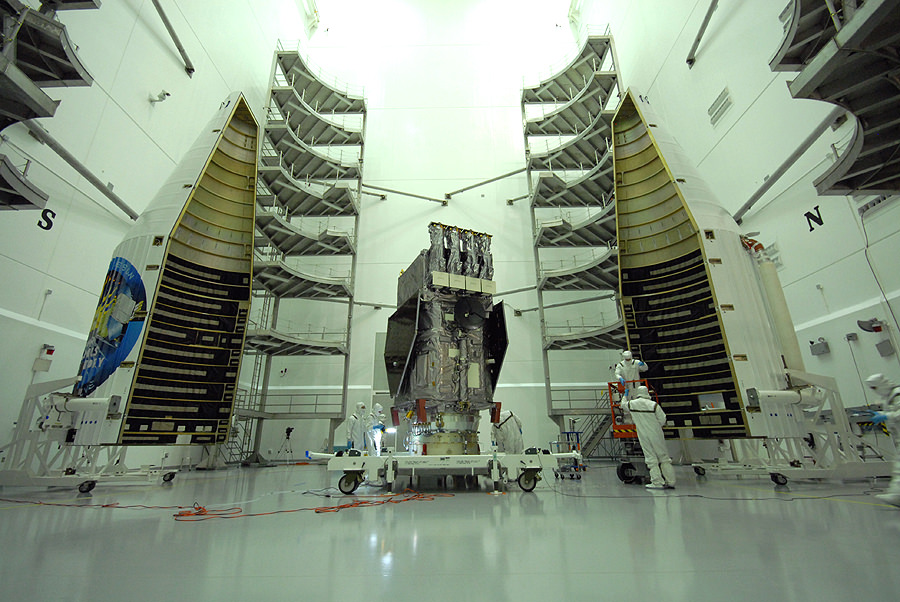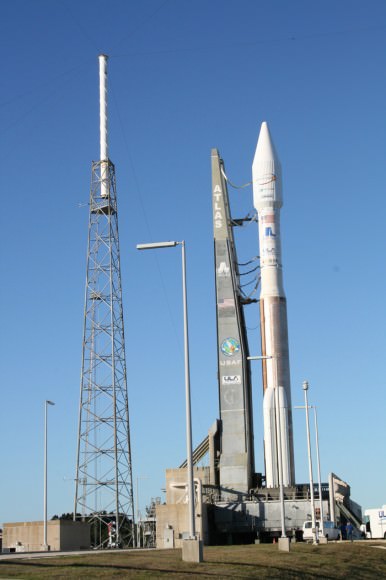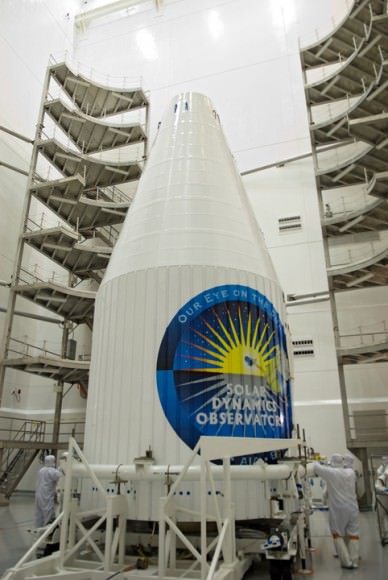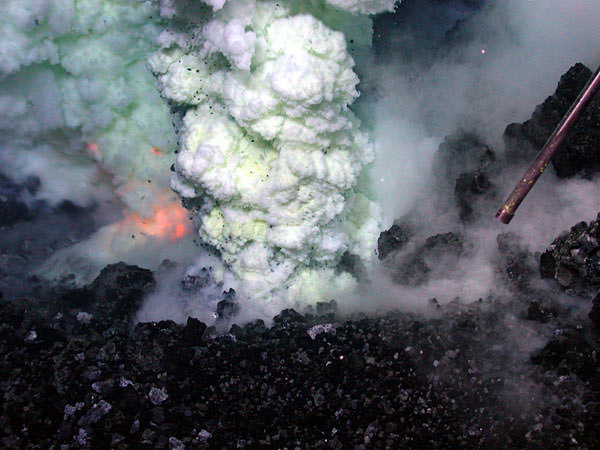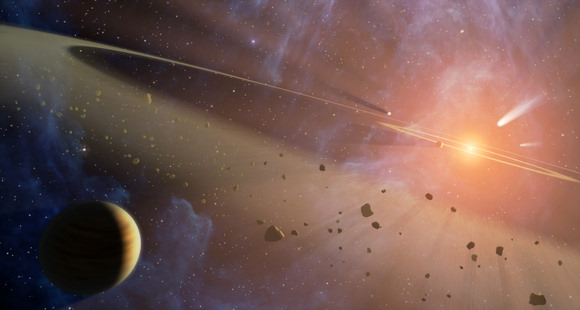[/caption]
Models of the Sun’s evolution indicate it was as much as 30 percent less luminous during Earth’s early history than it is now. But, somehow the surface of the planet was warm enough for primordial life to emerge. A new study and a look at Saturn’s moon Titan has provided clues for how the Sun could have kept the early Earth warm enough. Scientists say a thick organic haze that enshrouded early Earth several billion years ago may have been similar to the haze that covers Titan and would have protected emerging life on the planet from the damaging effects of ultraviolet radiation, while warming the planet, as well.
Eric Wolf from the University of Colorado-Boulder and his team believe the organic haze was made up primarily of methane and nitrogen chemical byproducts created by reactions with light. If the particles clumped together in larger, complex structures, an arrangement known as a fractal size distribution, then the smallest particles would interact with the shortwave radiation, while the larger structures made out of the smaller particles would affect longer wavelengths. Not only would the haze have shielded early Earth from UV light, it would have allowed gases like ammonia to build up, causing greenhouse warming and perhaps helped to prevent the planet from freezing over.
Other researchers including Carl Sagan have proposed possible solutions to this “Early Faint Sun” paradox, which generally involved atmospheres with powerful greenhouse gases that could have helped insulate the Earth. But while those gases would have blocked the radiation, it wouldn’t have warmed Earth enough for life to form.
“Since climate models show early Earth could not have been warmed by atmospheric carbon dioxide alone because of its low levels, other greenhouse gases must have been involved,” said Wolf. “We think the most logical explanation is methane, which may have been pumped into the atmosphere by early life that was metabolizing it.”
Lab simulations helped researchers conclude that the Earth haze likely was made up of irregular “chains” of aggregate particles with greater geometrical sizes, similar to the shape of aerosols believed to populate Titan’s thick atmosphere. The arrival of the Cassini spacecraft at Saturn in 2004 has allowed scientists to study Titan, the only moon in the solar system with both a dense atmosphere and liquid on its surface.
During the Archean period there was no ozone layer in Earth’s atmosphere to protect life on the planet, said Wolf. “The UV shielding methane haze over early Earth we are suggesting not only would have protected Earth’s surface, it would have protected the atmospheric gases below it — including the powerful greenhouse gas, ammonia — that would have played a significant role in keeping the early Earth warm.”
The researchers estimated there were roughly 100 million tons of haze produced annually in the atmosphere of early Earth during this period. “If this was the case, an early Earth atmosphere literally would have been dripping organic material into the oceans, providing manna from heaven for the earliest life to sustain itself,” said team member Brian Toon, also from CU-Boulder.
“Methane is the key to make this climate model run, so one of our goals now is to pin down where and how it originated,” said Toon. If Earth’s earliest organisms didn’t produce the methane, it may have been generated by the release of gasses during volcanic eruptions either before or after life first arose — a hypothesis that will requires further study.
This new study will likely re-ignite interest in a controversial experiment by scientists Stanley Miller and Harold Urey in the 1950s in which methane, ammonia, nitrogen and water were combined in a test tube. After Miller and Urey ran an electrical current through the mixture to simulate the effects of lightning or powerful UV radiation, the result was the creation of a small pool of amino acids — the building blocks of life.
“We still have a lot of research to do in order to refine our new view of early Earth,” said Wolf. “But we think this paper solves a number of problems associated with the haze that existed over early Earth and likely played a role in triggering or at least supporting the earliest life on the planet.”
Sources: CU-Boulder, Science










